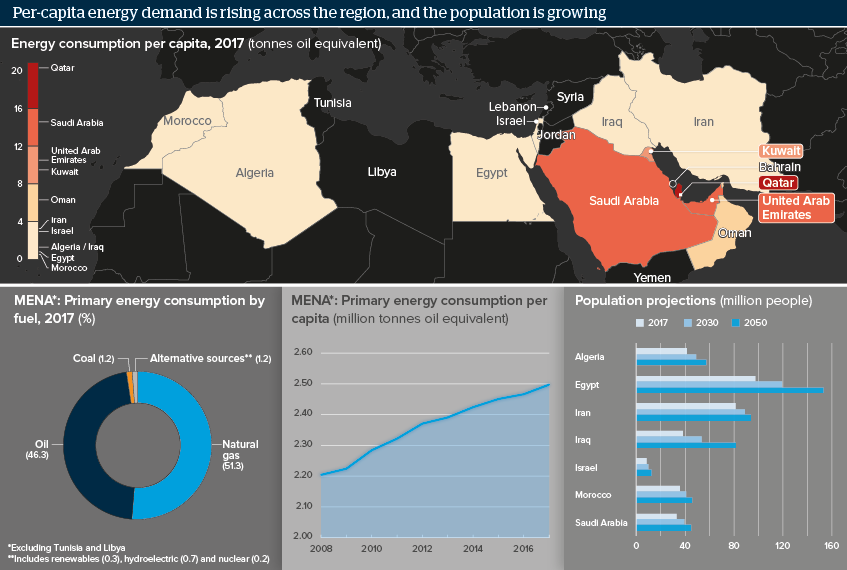Middle East faces energy diversification challenges
Many countries in the Middle East and North Africa (MENA) have energy diversification programmes
Source: World Bank; BP Statistical Review of World Energy, October 2018; UN Department of Economic and Social Affairs
Outlook
From Morocco to Saudi Arabia, governments vaunt energy diversification plans. Solar and nuclear are particularly popular alternative sources.
However, projects have not yet been completed or have not begun, and only a little over 1% of energy is currently generated through renewables or nuclear (Iran is the only country in MENA that currently generates power from the latter).
Moreover, demand is rising. This is a result of the dual pressures of greater per-capita consumption (especially in the Gulf, where air conditioning and water desalination require huge amounts of electricity) and of growing populations.
Impacts
- Production of gas -- the region’s most widely used source of energy -- will expand.
- Poorer states will struggle with the rising costs of domestic energy demand.
- Gulf countries will remain among the world’s largest per-capita greenhouse gases emitters, at least in the medium term.
